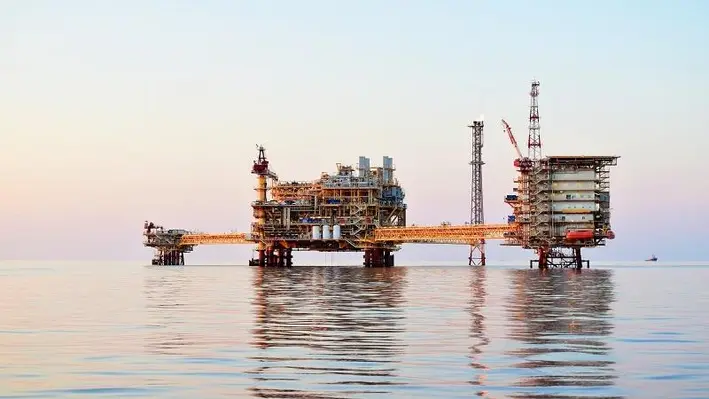

The UK Oil and Gas Authority (OGA) has published a new cost estimate for offshore oil and gas decommissioning in the UK Continental Shelf (UKCS), suggesting that the total cost of decommissioning has reduced, spelling good news for both the industry and the Exchequer.
The report showed that the total cost of decommissioning UKCS offshore oil and gas infrastructure has reduced to UK£46bn, which is a projected saving of nearly UK£14bn. This marks steady progress towards the US£39bn by end-2022 target called for in the 2017 report.
Behind the decline
The UK£2bn reduction in the 2021 estimate is the result of continuous improvement and reductions in well decommissioning costs, driven by reductions in subsea P&A costs, cost estimating uncertainty and associated cost risk.
Expenditure in 2020 was impacted by Covid-19 and the low commodity price, contributing to a continuation of a plateau in the rate of cost reduction reported last year. While short-term forecasts show a recovery from this slowdown, commercial transformation remains key to meeting the cost reduction target.
There are positive signs that operators are embracing lessons learned from across the industry as well as embedding a culture of continuous improvement and setting ambitious best in class performance targets. This is helping drive the downward cost trajectory and, more will be needed to meet the target. At the same time however there remain some real inconsistencies in cost performance, reducing the overall improvement of the basin.
The majority of decommissioning cost is forecast to be incurred over the coming two decades, and the window of opportunity to identify and embed the necessary changes to drive the next step change in cost efficient decommissioning is immediate.
Achieving the cost reduction target
The OGA’s updated Decommissioning Strategy sets out the commercial transformation and strategic objectives required to deliver cost efficiency and achieve the UKCS cost reduction target of greater than 35%.
The 2021 Estimate notes that there are a number of opportunities to bring about further cost reductions, but it also highlights risks to continuing to bring down costs.
An average annual cost reduction of 6% has been delivered over the past four years. If this average is maintained, the 35% target remains achievable by end-2022.
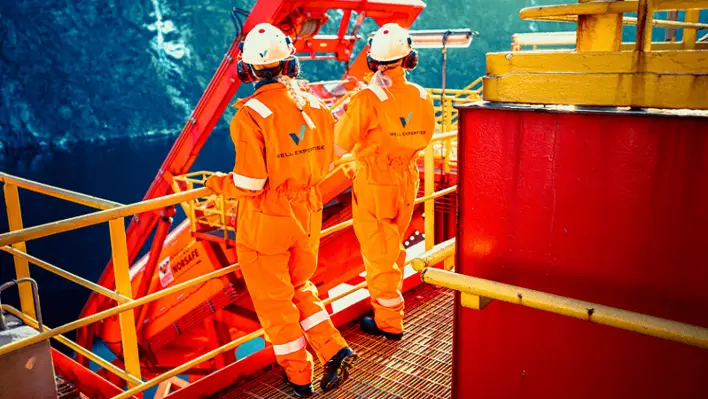

Well Expertise, a well management company providing well planning and operational support, has successfully used a mobile simulator for plug and abandonment (P&A) well control training to decommission several wells in the North Sea.
Well Expertise is the well management company for operator DNO during planning and execution of the permanent plugging and abandonment (P&A) of three subsea template wells at Oselvar.
Well Expertise worked closely with Drilling Systems and training specialist Survivex to develop high level well specific scenarios to simulate bull heading, reverse circulation, trapped gas and cutting casing operations. Six crews were then given various scenarios to test choke control and response to pressure increases.
This is the first time an on-the-rig (OTR) simulator has been used in-situ for P&A well-specific training to help prepare crews in advance of potential well control situations in the operation.
Following this and previous onboard simulator training success, Well Expertise will now be rolling out well specific onboard simulator training across its remaining drilling campaigns later this year with DNO, Wellesley and other operators.
Morten Laget, Business Development Manager at Well Expertise, commented, “We have an exceptional record of risk management and safety is our top priority. We strive to offer our clients any solution available that helps to reduce the risk of the operation and onboard simulator training is an excellent tool to help with this.”
“Killing the well is a key part of any decommissioning project and presents its own unique challenges. Plug and abandonment training is typically not addressed to this extent during periodic mandatory well control courses, but the OTR equipment allowed us to undergo some practical training on the rig itself during work time combined with review of subsea equipment and associated operations. This helped the crew in building competency and confidence and lowering the risk of major well control incidents,” Laget added.
Clive Battisby, Head of Simulation at 3t Energy Group, said, “The strength of the 3t Energy Group lies in our holistic offer, which combines cutting-edge technology with the very best of traditional training. For Well Expertise we combined tailored simulator training in-situ with experienced instruction to deliver a blended learning solution to meet the client’s needs.”
“To our knowledge this is the first-time blended learning with the OTR has been delivered for a P&A campaign and we are delighted it has worked so well. We are looking forward to working with Well Expertise again later this year on its forthcoming drilling campaigns.”
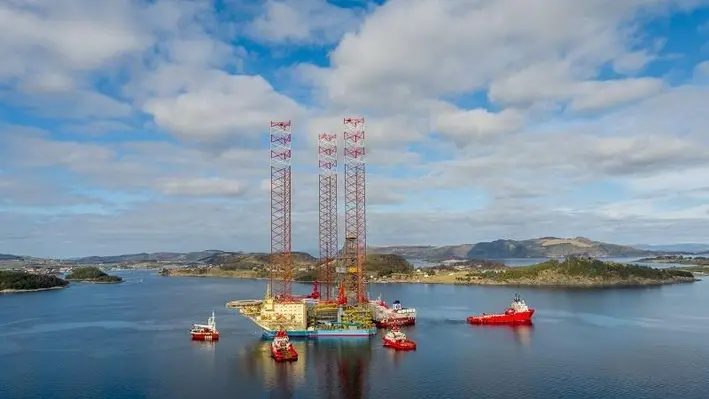
 Aker BP has completed the plugging of wells at the Valhall oilfield centre six years earlier than originally planned, saving more than NOK5bn.
Aker BP has completed the plugging of wells at the Valhall oilfield centre six years earlier than originally planned, saving more than NOK5bn.
Aker BP is the operator alongside partner Pandion of the Valhall oilfield which first saw oil flow in 1982. Since then, more than one bnboe have been produced from the area, which is three times more than originally expected.
In 2014, as a result of the decision to pursue a policy of modernisation rather than abandonment, Aker BP began a plugging campaign in order to revamp the field and keep it producing for the foreseeable future. Since that time, a total of 30 oil wells from the original drilling platform have been plugged in order to pursue the ambition of bringing up a further one bnboe from the field over the next forty years.
The first plugging campaign spanned 2014-2016 and was conducted by the Maersk Reacher rig. The next two campaigns, between 2017-2018 and 2020-2021, were carried out by the Maersk Invincible drilling rig, the departure of which last week marks the end of plugging operations for the field.
These campaigns were a roaring success as Aker BP have reported that no serious incidents were incurred during the work and that they were carried out in a total of four years, at a cost of NOK10.1bn, as opposed to original estimations of 10 years and NOK15.5bn.
Tommy Sigmundstad, SVP Drilling and Wells in Aker BP, commented, “The work to plug the wells has been a success through three major campaigns. The plugging has been carried out safely and efficiently. We have an unrelenting focus on improvement, and that has paid off in shorter operation times and reduced costs. Our alliance partner Maersk Drilling has been a key factor in all the campaigns. I am incredibly proud of the work delivered by teams across all companies both offshore and onshore.”
Alongside the plugging operations there has been a number of decommissioning activities carried out and planned. The QP accommodation platform was removed in the summer of 2019 by the catamaran crane vessel, Pioneering Spirit, and over the course of the next few years the original drilling platform and process platform will be removed along with the replacement of the original Hod wellhead platform (south of the Valhall field).
Utilising the latest technology
Wherever possible, Aker BP made use of the latest technology in order to optimise their operations.
Martin Straume, Chief Engineer for Well Plugging and Abandonment at Aker Bp, said, “Section milling of cemented casing has been carried out inside larger casing. We have done this to verify that well barriers are in place on the outside of the conductor. This means that we have avoided having to mill or pull entire sections of casing from the surface and down to the relevant depth. This represents up to several weeks of time saved per well, and is an enormous improvement in the plugging work.”
For the first time ever worldwide, Aker BP along with Halliburton and Maersk Drilling, conducted fully automated cementing operations from land, taking place from Aker BP’s offices in Stavanger. The technology increases efficiency, reduces costs and lowers HSE risk.
In addition, the top section of the old Valhall wells have been plugged using bismuth technology, an innovation conceived by BiSN to solve the challenge of potential methane leaks from old wells, and results in lower CO2 emissions compared with cement.
For the future
At the end of 2019, the first oil flowed from Valhall Flank West. As of March 2021, a new Hod platform is nearing completion at Aker Solutions’ yard in Verdal. The concept, implementation model and organisation for the Hod project were copied from Valhall Flank West. The planned production start for Hod is in Q1 2022, and recoverable reserves are estimated at around 40mnboe. Aker BP has also now embarked upon studies for a new central platform on Valhall, which will ensure production capacity for future volumes in the area.
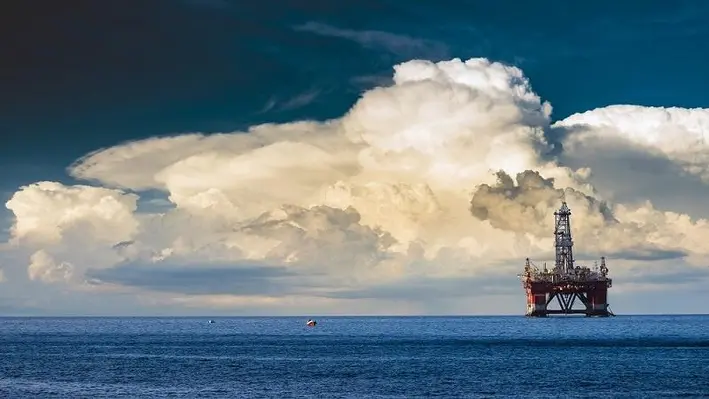

As part of their 2020 Full Year Results publication, EnQuest have outlined their 2021 performance outlook, highlighting the scale of decommissioning work ahead of them as they seek to retire ageing fields.
2020 in review
In 2020 EnQuest’s average production decreased by 13.8% to 59,116boe per day. While Covid-19 implications did stifle production for some time, the company reported that the primary driver of this reduction was the declining production rates and ultimate decision to cease production at high cost assets such as Heather/Broom, Thistle/Deveron and Alma/Galia.
Production at Alma/Galia ceased in June 2020 with the EnQuest Producer floating production, storage and offloading (FPSO) vessel moving off station quickly to the oil terminal jetty at Nigg in September. The group is still evaluating the options for the vessel’s future.
At Heather, the cessation of production (CoP) application was accepted by the regulator also in June, paving the way for decommissioning to commence. The platform remained shut in and depressurised all year, with front end engineering activities being undertaken ahead of the resumption of the well abandonment programme in 2021.
In June, the CoP application for Thistle/Deveron was accepted, allowing for the decommissioning phase to begin. The facility remained unmanned all year, although preservation visits to the Thistle platform took place as part of the preparatory works ahead of the planned 2021 well abandonment programme.
At Broom the application for CoP has been submitted to the regulators and approval is expected shortly.
2021 decommissioning
As expected, the Dons ceased production in early 2021 following the receipt of necessary partner and regulatory approvals in respect of CoP. The Northern Producer floating production facility is being used for initial decommissioning activities, such as flushing of the sub-sea infrastructure and to support implementation of effective well isolations. Once these activities have been completed, anticipated early Q2, the vessel will depart the field and be handed back to the owner.
At Thistle/Deveron, work will continue on the rehabilitation project alongside ongoing preparations for commencement of the well abandonment programme, which is expected to commence in Q4.
On Heather/Broom, activities to optimise the well abandonment programme and ready the rig for decommissioning have continued. Once completed, plug and abandonment of the development’s 41 wells is expected to begin in Q3, with the work programme anticipated to continue for approximately three years.
Restoring production rates
With so many facilities being retired, EnQuest have turned to other fields in order to restore their production rates and, in February this year, signed an agreement to purchase Suncor’s entire 26.69% non-operated equity interest in the Golden Eagle area, comprising the producing Golden Eagle, Peregrine and Solitaire fields. EnQuest has estimated that the acquisition will add an immediate incremental production of 10,000boe per day, 18mnbbl to its net 2P reserves and 5mnbbl to its net 2C resources.
The agreement has been signed with an initial consideration of US$325mn, and upon completion, will add immediate material low-cost production and cash flow to EnQuest and will allow the group to accelerate the use of its tax losses. EnQuest plans to finance the transaction through a combination of a new secured debt facility; interim period post-tax cash flows between the economic effective date of 1 January 2021 and completion; and an equity raise.
EnQuest Chief Executive, Amjad Bseisu, commented, “We are delighted we have agreed the acquisition of a material interest in Golden Eagle, a high-quality, low-cost UK North Sea development. Upon completion, this acquisition will add immediate material production and cash flow to EnQuest and will allow us to accelerate use of our substantial tax losses. It also demonstrates our continued commitment to the UK North Sea and diversifies our existing production base.”
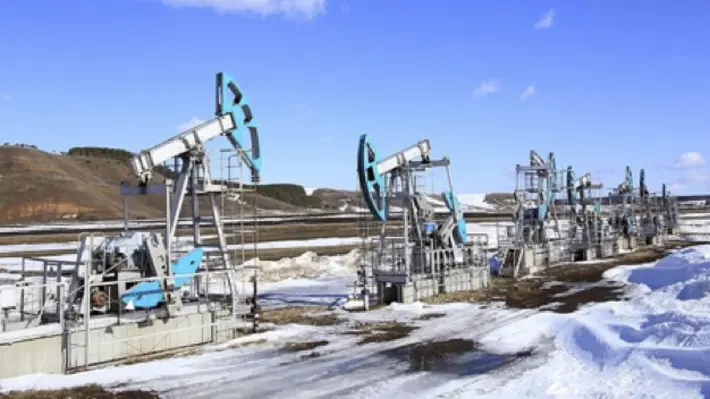

In our previous article, I promised to address the doubts of the readers around the material that could be placed in the hole as a barrier for plug and abandonment, and whether those materials differ depending on time span defined for the barrier’s life.
I gave you a spoiler when I told you that cement IS NOT the only material for well abandonment. So now, let’s dig further into the matter.
This article was originally published 25. October 2017 by former Wellcem employee Miguel Diaz. An updated version is republished now by Svein Normann, in order to introduce this important topic to our new blog readers and followers since then:
Hopefully, you all remember that we defined the Gulf of Mexico (GoM) and the North Sea as the two more relevant places regarding the availability of detailed and comprehensive legislation that addresses the well abandonment process.
Moreover, we gave special attention to the UK offshore oil and gas organization (UKOG) (https://oilandgasuk.co.uk) series of three documents on well abandonment practices. They include a “Guideline on qualification of materials for the abandonment of wells.”
It was issued in 2012 and reviewed three years after with contributions from experts from Shell, the University of Dundee, ConocoPhillips, SINTEF, TNO, Schlumberger, BP, Chevron, ExxonMobil, Los Alamos National Lab, Sandaband, Halliburton, Baker BJ Services, TOTAL, Raw water and Wellcem.
Read also: Our cases “Collapse in the tubing and casing” and “Plugging a well with no mechanical integrity“
TEMPORAL OR PERMANENT IT IS ALL THE SAME
When we place barriers in the well to isolate formations from each other and the surface with no intention to ever re-enter the abandoned part of the wellbore, the abandonment is considered a permanent one.
Where there is an intention to re-enter, we call it temporary abandonment (typically a matter of months). Besides the timeline of the application, the only other difference between permanent and temporary abandonment is that a temporary barrier is not required to extend across the full section of the well and include all annuli.
Other than that, a temporary barrier must fulfil some functions, which we discuss below, and they do not differ from those of permanent barriers, except possibly for a relaxed timescale of required durability.
FUNCTIONAL REQUIREMENTS OF PERMANENT BARRIERS
Again, the UKOG guideline defines the requirements for a well abandonment barrier to be successful, those are:
1. Sealing
A leak is a breach of integrity which passes entirely through the barrier. Such a gap can take the form of a crack or channel and may be present from the start of placement or develop over a long or short period. Failure can occur due to debonding, dissolution or cracking.
The primary function of a permanent barrier is to provide a seal against leaks. But, the curious thing is that the guideline considers inevitable that fluid within the well will ultimately migrate past a barrier, albeit at a low rate.
Thus, appropriate barriers are those through which the rate of permeation is acceptably low. The approach taken is to require that the barrier permits leakage of fluids at the same or a lower rate than the caprock. The permeability of caprock is typically within the range of 0.001-1 micro Darcy.
But from historical industry experience, barriers of 30m (100 ft) of “good” cement (usually with a permeability of 10 micro Darcy) are performing to a level satisfying the oil and gas industry.
A maximum permeability of 10 micro Darcy has then become the acceptance criteria for the qualification of a cement barrier of the sort discussed above. If permeability is lower, a shorter barrier may be installed. Longer barriers could be used for more permeable materials.
2.Position
Once placed, the barrier should not move, either along the wellbore or in a lateral direction. For instance, the barriers should not be pushed upwards by pressure developing below. The barrier materials are required to remain attached to interfaces to where it was installed.
Materials used for P&A should pass shear bond stress tests demonstrating what delta pressures are needed to extrude the materials out of a cylindrical cell that mimics a cased well.
3.Placement
The permanent barrier material should be easily placed in a wellbore at the desired depth and perform as required. Therefore, it should have appropriate properties that allow it to displace the existing fluids and form a continuous sealing medium, even when considering its inevitable contamination.
Where a barrier material undergoes a transformation from liquid to a solid, this period of change must be sufficiently short to prevent an escape of fluid and unacceptable disruption of the barrier.
Verification of the barrier placement must be possible even in deviated wells.
Read more: Lab tests to review when designing a “gas-tight” cement slurry
4.Durability
The barrier material should not degrade such that its sealing capabilities or position are compromised. It should be able to withstand wellbore changing conditions for ages.
5.Removal and reparability
Being removable is a fundamental element if the abandonment was a temporal one. The barrier should be easy to remove with existing conventional industry methods (drill bits, mills, acid, etc.). Also, if a leak through a barrier would develop, there should be a method to remove/repair it to regain integrity.
6.Operating conditions
After placement and activation, the permanent barrier material will have to withstand external loadings that could vary with time, among those are:
MATERIALS
Having read these expected requirements for a material to be considered a qualified abandonment barrier;
Cement is currently used in wells as the prime material for abandonment purposes because it is found to have similar properties to the rock that it is replacing. However, given its operational limitations, alternative materials, which offer significant advantages over cement, are being proposed and developed by the industry.
These substances, however, still don’t replace cement. That’s because – when compared with cement that has been used for hundred years or so – uncertainty with regards to long-term integrity of the alternative materials acts as disincentive for their use.
The legislation, as reviewed last week, also play a role in the incentive to use cement for P&As; some countries refer only to cement as abandonment material in their legislation, while some others ask for an abandonment material to be “equivalent to cement.”
The UKOG guideline for qualification of materials then defines (see table above) a list of materials that offer characteristics that meet all the functional requirements for permanent barriers that we reviewed above.
I will give you a summary:
INTERESTING CASE STORIES
From the list, the two that have made more advances in recent years are Thermo-setting polymers (Group C) and the modified in-situ materials (group J).
This last case particularly refers to “Melting the cap rock,” which consists of using a thermite plug to seal off the well by melting both the well components and the rock formation around them to recreate the cap rock.
This method was trialed in 2016 by Centrica in Canada claiming it could potentially reduce well P&A costs by more than 50%.
The Thermo-setting slurries have been around for a slightly longer time. Once introduced, it was evident that resins have a lot to offer. Using the “requirements for permanent barriers” as a checklist – and with a comparison against cement in mind – the resins have:
In 2012, the first couple of cases of bull-heading abandonment were documented in the Gulf of Mexico (Charpiot & Jones, Offshore Magazin, May 2013). In the first one, a weighted resin with low-viscosity was used to abandon a well due to its ability to be placed with minimal injectivity and yet provide high-compressive strength after setting. The well represented a closed system because the platform sheared away during a hurricane.
The same year in another Gulf of Mexico-well, bubbles were coming from the annulus after an initial cut on the casing. In this case, the resin was used in a squeeze application, stopping the annular leak. Subsequently, a 50-ft (15-m) resin plug was set. The resin had a low yield point, and due to its ability to be formulated free of solids, it penetrated small cracks and micro-annuli without the risk of particle bridging.
In March 2016, the Gulf of Mexico’s first lower abandonment using resin took place. Because there was a downhole obstruction, the operator of this particular field determined that it could not reliably carry out a lower temporary abandonment with cement. Cement could have separated or dehydrated under tight spaces in the restricted flow paths, whereas resin would have had no such issues. In this particular case, dual-coiled tubing risers were used to deliver fluids from the waterline down to the mudline.
In June 2017, another interesting P&A operation was carried out in the Middle East, with a thermos-setting polyester resin. The well involved was drilled in November 1979 and in April 2017 it developed 1,100 psi of sustain casing pressure in the 4½” x 9⅝” tubing-casing annulus (TCA). At the same time, the H2S Rupture Exposure Radius (RER) for the well was reported as 63 meters to the half “Low flammable limit” (LFL) and 1049 meters to the 30 ppm concentration threshold.
As per client definition, a well is located in a populated area “if the population exceeds 20 persons residing, working, or otherwise located within the 30 ppm rupture exposure radius (RER)”. In this case, significant civilian’s structures existed within that radius; a Highway at 524 meters and a hospital at 786 meters, for instance.
The ultimate goal of the workover operation was to re-complete the well running a 4-1/2” liner inside the 7-inch liner (covering the existing perforations). But before a rig could move in and remove the existing completion, the integrity of the well have to be re-gained taking into consideration the limitations given by the pressurized annulus, H2S levels present on the formation and the well surface location.
The operation was set to be done with a 1-1/2” Coiled tubing giving the ID restrictions of the 2-7/8” completion tubing in the well. Resin was chosen as the barrier. The low viscosity allowed lower pumping pressures while placement, and the solid free nature enabled maximum penetration during the squeeze operation. (1,000 – 1,200 psi pressure limitation set for the job due to casing conditions).
Nine and a half barrels of an 88 pcf thermo-activated polymer resin was spotted without inconvenience.
The resin plug was then pressure tested and milled allowing the well to be circulated with full returns and a new 4-1/2” liner cemented in place.
The job was a success proving resins can be used for P&A and, also, it can be placed safely with one of the smaller available coiled tubing pipes in the market.
By Svein Normann
Svein Normann has a MSc from the Norwegian University of Science and Technology and 27 years’ experience in the oilfield. 10 years in field operations as cement operator, design engineer and operations manager. Further on 16 years in oilfield equipment engineering and development. He is today working as VP Global Operations & Technology at Wellcem AS.
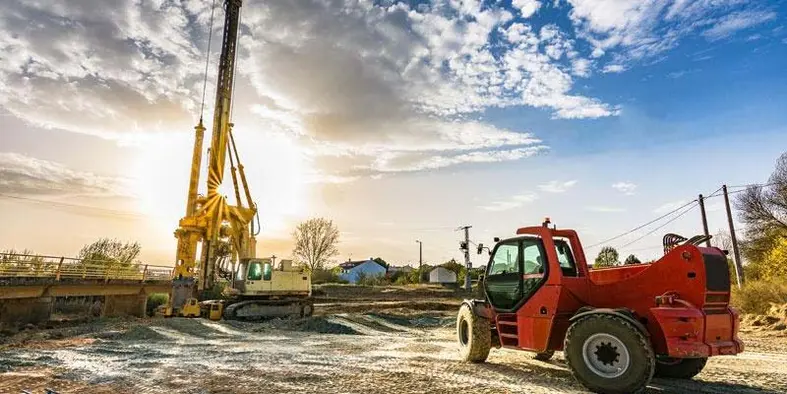

Innovation, along with ‘collaboration’, ‘standardisation’ and even ‘strategy’, is a buzzword of the day. But what does innovation even mean in the Oil & Gas industry? For some, it is enough to produce trivial novelties and label them ‘innovative’. At OFS Partners, we believe true innovation is deeply pragmatic and creates value.
True innovation requires a depth of understanding that finds patterns and trends, bridges interfaces and connects previously unconnected dots. Without these outcomes, it is nothing more than speculative R&D expenditure with a slim chance of providing sustainable economic benefit. The real litmus test of a decent innovation is not based on its bells and whistles, its ‘digital’ nature or even its novelty, but instead is based on whether or not it has yielded a sustainable economic or social benefit above and beyond what has gone before.
Take decommissioning as an example: it is one of the greatest challenges we face as an industry, but also a great opportunity for the North Sea to pioneer solutions that can later be exported around the world. Here we face a chasm, missed by many, between the oilfield services supply chain and operators. While the supply chain is focusing on a technological solution, operators tend to approach it as a challenge of managing, optimising and where possible eliminating scope. In many ways it is a top-down vs bottom-up dichotomy that could see the hard working supply chain develop solutions that end up offering negligible gains because the scope it can impact has been reduced.
For example, prior to the DNV-GL risk-based guidance to well plugging and abandonment (P&A), there were only very prescriptive guidelines (written by bodies of operators) that dictated equivalent treatment to all wells in terms of P&A. Put simply, there needs to be a permanent barrier to prevent release of hydrocarbons. However, not all wells are equivalent, so why should the treatment of a Southern North Sea depleted gas well (relatively benign) be the same as a High Temperature High Pressure minimally producing oil well in the Central North Sea (very hazardous)? How can innovation come into play most usefully here? One way is taking the operator’s well stock, engaging and understanding what it really needs instead of zooming in on specific technologies for specific applications (for example, milling, lifting, cutting or pressure testing). Once the impact on optimising and changing scope is known, and informed by the engineering and expertise or track record of the supplier, then R&D dollars can be valuably spent on identifying a solution relative to that sub-segment of well stock – therefore investing in an already highly developed client relationship against a specific, actionable, known need.
Those best poised to make gains through innovation are those who understand what operators really need, instead of making assumptions based on static information or using analysts’ assertions as to what is out there. Above and beyond engineering expertise, it requires investing in relationships and developing and demonstrating understanding, before R&D, technology and cutting steel come into play.
By approaching innovation in this way – by first and foremost engaging and understanding – returns are guaranteed, as at a very minimum you are on the front foot building relationship capital with your client. With that comes greater clarity on the future in general and the opportunity to use innovation powerfully to shape the future of decommissioning in the North Sea and further afield.
We are actively working across the sector in specific cases to help bridge the understanding gap and safeguard the future of companies aspiring to make the best of current market conditions. We go above and beyond the simplistic approach of finding and analysing data to determine how specific actions can lead to value delivery. If you are interested, we would be keen to hear from you.
Page 11 of 11